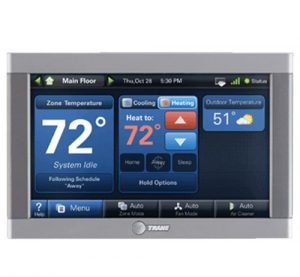While moisture management in the home is often thought about, and if lacking is often linked to many problems, many homeowners find themselves unsure of what’s actually best for their home. Should it feel humid in my house? What’s too dry? How do we even measure the moisture in our home’s air? The answer to all of those questions—it depends.
Properly managing the humidity inside the home can sometimes be a tricky task. There are many factors that can influence the ideal humidity in your home. Your environment, for one, can heavily influence your home’s ability to maintain a desirable humidity level. Likewise, during different seasons, humidity management has different requirements. Summer and winter months present unique problems when it comes to humidity in the home. These problems each have unique preventative steps and solutions, which we’ll address in this post.
The measurement of this humidity is called relative humidity (RH). Ideally, a home’s relative humidity (RH) should be in the range of about 30% to 50%. For many, the summertime problem is keeping the RH low enough. Homes often get too damp, especially without proper air ventilation.
In some areas of the country, the opposite sometimes holds true in the winter, when it’s often difficult to keep the RH inside a home at a high enough level to fall within the ideal range mentioned above. Even in humid climates, the air in homes can get too dry (meaning the RH is too low), resulting in uncomfortable problems such as excessive static electricity, dry skin or respiratory issues.
However, here in the Pacific Northwest, the RH is very high on average. This fact is often disguised and unknown to many homeowners because homes can feel deceptively dry when heat sources are running during the cold winter months. Just because the air feels dry from the heat doesn’t mean the relative humidity is too high. This deception often causes homeowners to install humidifiers to take care of that dry feeling. Rather than resolving a problem, they could in fact actually be adding to the issue and making the inside of the home even more humid.
If the relative humidity inside the home is truly too low, there may be a larger issue at hand. It’s imperative to remember that cold air equals dry air. In the winter, air leakage is a huge culprit of low RH inside the home because cold air gets into the home through cracks and leaks. When this occurs, the home becomes dry. Naturally, homeowners decide to install a humidifier to increase the relative humidity in their home. While this may be a temporary fix, it is not solving the root problem of air leakage. In this case, humidifiers are just acting as band-aids to the problem.
Reducing or eliminating air leakage can make relative humidity management much, much easier in your home—and can potentially eliminate the need to install or purchase and expensive humidifier. Not only will this make you and your family much more comfortable, sealing air leaks will also make your home more efficient, saving you money in the long run on expensive energy bills.
Give us a call today to learn more.







